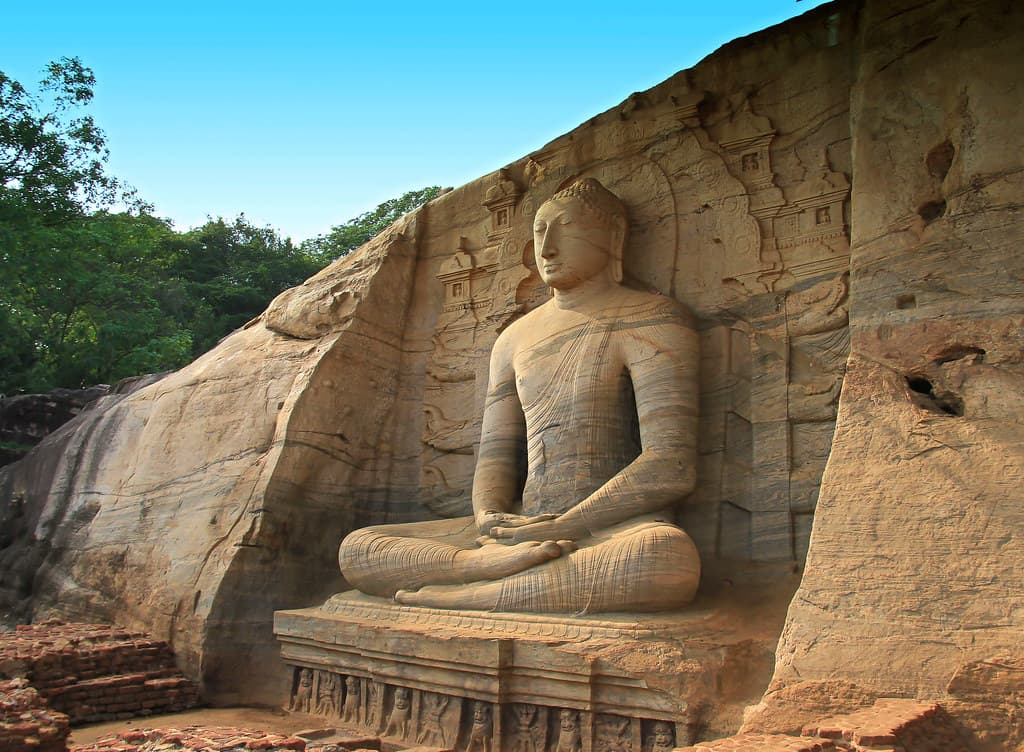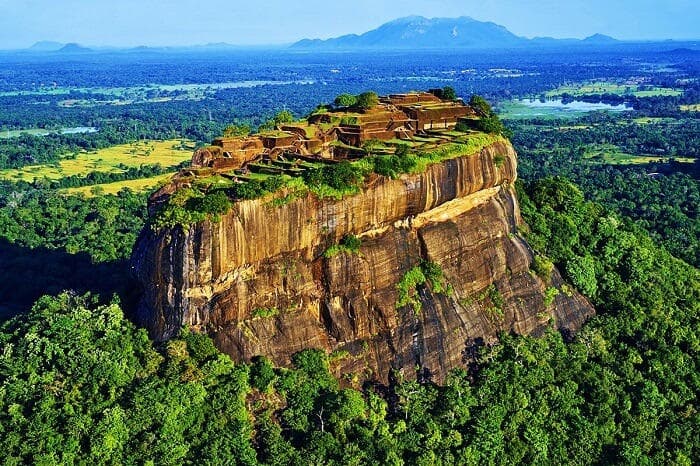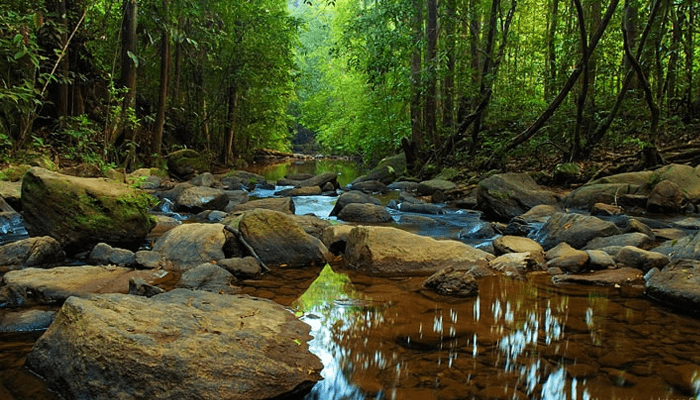A Complete Guide to Sri Lanka’s UNESCO World Heritage Sites
By Tripceylon
Fri Jun 13 2025
7 mins read

Sri Lanka, often referred to as the “Pearl of the Indian Ocean,” is a country steeped in history, culture, and natural beauty. With a heritage that spans over 2,500 years, the island is home to some of the world’s most awe-inspiring landmarks, eight of which have been recognized by UNESCO as World Heritage Sites. From ancient cities to pristine rainforests, these locations offer a captivating journey through Sri Lanka’s rich history, stunning architecture, and incredible biodiversity.
If you’re a traveler with a passion for culture, history, or nature, this complete guide to Sri Lanka’s UNESCO World Heritage Sites will take you through the most iconic destinations that deserve a place on your travel itinerary.
1. Ancient City of Polonnaruwa — A Glimpse into Sri Lanka’s Glorious Past

Polonnaruwa, Sri Lanka’s second ancient capital, is a fascinating archaeological site that showcases the ingenuity and grandeur of a bygone era. Flourishing between the 11th and 13th centuries, this ancient city is home to some of the island’s most impressive ruins, including palaces, temples, and monasteries.
Highlights:
- The Royal Palace: Once a massive structure with 1,000 rooms, only the foundations and a few walls remain today, giving you an idea of its former grandeur.
- Gal Vihara: This famous rock temple features four beautiful Buddha statues carved out of granite. The reclining Buddha is particularly striking, measuring over 14 meters in length.
Best Time to Visit: November to March, when the weather is cooler and more conducive for exploring the ruins.
2. Sigiriya — The Majestic Lion Rock Fortress

Sigiriya, or the Lion Rock, is arguably Sri Lanka’s most iconic historical site. This 660-foot-tall rock fortress, built in the 5th century by King Kashyapa, was once the heart of an ancient kingdom. Climbing Sigiriya is an adventure in itself, but the reward at the top is unmatched panoramic views and a close-up look at the rock’s famous frescoes.
Highlights:
- Sigiriya Frescoes: These beautiful, well-preserved frescoes of celestial maidens are painted on the western face of the rock and are one of Sri Lanka’s greatest artistic achievements.
- The Mirror Wall: Once polished so well that the king could see his reflection, this wall still bears ancient graffiti written by visitors who marveled at Sigiriya centuries ago.
Best Time to Visit: Early morning or late afternoon to avoid the midday heat and crowds.
3. Sacred City of Anuradhapura — The Heart of Sri Lanka’s Buddhist Heritage

Anuradhapura, the first ancient capital of Sri Lanka, is a sacred city revered by Buddhists around the world. Founded in the 4th century BC, it is one of the oldest continuously inhabited cities on the planet. Anuradhapura’s most famous feature is the Sri Maha Bodhi Tree, said to be a sapling from the tree under which the Buddha attained enlightenment.
Highlights:
- Sri Maha Bodhi Tree: Planted over 2,000 years ago, this sacred tree is the oldest human-planted tree in the world with a known planting date.
- Ruwanwelisaya Stupa: A massive white dagoba built in 140 BC, this structure is one of the most venerated stupas in Sri Lanka.
Best Time to Visit: Anuradhapura is best visited during the early morning or late afternoon to enjoy the cooler temperatures and peaceful ambiance.
4. Golden Temple of Dambulla — A Sanctuary of Buddhist Art

The Dambulla Cave Temple, also known as the Golden Temple of Dambulla, is one of Sri Lanka’s most well-preserved cave temple complexes. These caves have been a place of worship for over 2,000 years and house more than 150 Buddha statues, along with exquisite murals that cover the walls and ceilings.
Highlights:
- Cave Temples: There are five main caves filled with statues of the Buddha, kings, and gods. The largest, Cave of the Great Kings, is a highlight with its beautiful 14-meter-long reclining Buddha statue.
- Murals: The colorful frescoes depict scenes from the Buddha’s life and are some of the finest examples of Buddhist art in Sri Lanka.
Best Time to Visit: Morning or late afternoon to avoid the heat, as you’ll need to climb up a steep path to reach the temple.
5. Old Town of Galle and Its Fortifications — A Colonial Gem

Located on Sri Lanka’s southern coast, Galle is a well-preserved colonial town with a rich history. The Galle Fort, a UNESCO World Heritage Site, was built by the Portuguese in the 16th century and later fortified by the Dutch. Walking through the fort, you’ll find a unique blend of European architecture and South Asian traditions.
Highlights:
- Galle Lighthouse: One of the most iconic landmarks within the fort, offering picturesque views of the ocean.
- Galle Fort Museums: Explore the National Maritime Museum or the Galle Fort Museum to learn more about the town’s history and the various colonial influences that shaped it.
Best Time to Visit: Galle can be visited year-round, but the best time is from December to March when the weather is ideal for walking around the fort.
6. Sacred City of Kandy — The Cultural Capital

Nestled in the hills of central Sri Lanka, Kandy is home to one of the most important religious sites in Buddhism: the Temple of the Tooth Relic. This sacred temple houses a tooth relic of the Buddha, making it one of the most venerated places of worship for Buddhists worldwide.
Highlights:
- Temple of the Tooth Relic: This beautiful temple complex is a must-visit for its stunning architecture and religious significance.
- Kandy Esala Perahera: If you’re lucky enough to visit during July or August, don’t miss this vibrant festival, which features processions of dancers, elephants, and drummers celebrating the relic.
Best Time to Visit: July and August during the Kandy Esala Perahera festival for a cultural experience like no other.
7. Sinharaja Forest Reserve — A Biodiversity Hotspot

The Sinharaja Forest Reserve is Sri Lanka’s last viable area of primary tropical rainforest and a biodiversity hotspot. This UNESCO site is home to a wide variety of endemic flora and fauna, making it a paradise for nature lovers and wildlife enthusiasts. Trekking through Sinharaja offers a chance to encounter exotic birds, insects, and rare plant species.
Highlights:
- Birdwatching: Sinharaja is home to nearly 95% of Sri Lanka’s endemic birds, making it a must-visit destination for birdwatchers.
- Trekking: The forest’s dense greenery and natural beauty make trekking here an unforgettable experience.
Best Time to Visit: January to March and August to September, when the weather is more favorable for trekking.
8. Central Highlands of Sri Lanka — Nature’s Haven

The Central Highlands of Sri Lanka, encompassing Horton Plains, the Knuckles Mountain Range, and Peak Wilderness, is a UNESCO World Heritage site known for its unique landscapes and biodiversity. It’s a paradise for hikers, with trails leading to breathtaking viewpoints, including the famous World’s End.
Highlights:
- Horton Plains and World’s End: A high-altitude plateau offering spectacular views, including the sheer drop of World’s End.
- Knuckles Mountain Range: A great destination for adventurous hikers, with a variety of trails that pass through dense forests and mist-covered peaks.
Best Time to Visit: From December to April, when the weather is dry and the skies are clear, offering the best views.
Conclusion
Sri Lanka’s UNESCO World Heritage Sites are a window into the island’s rich cultural and natural heritage. From ancient cities that whisper tales of bygone empires to lush forests teeming with wildlife, these destinations offer travelers an unforgettable experience that blends history, spirituality, and adventure. If you’re planning a trip to Sri Lanka, make sure these world-renowned sites are at the top of your list.
Frequently Asked Questions